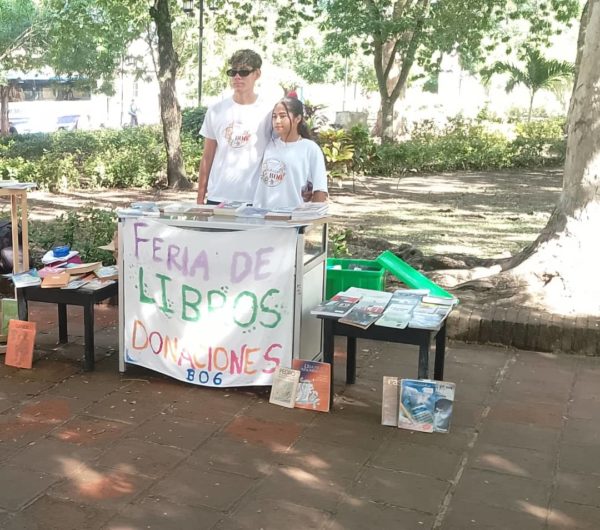The Youth in Cuba Aren’t Lost
Interview with Bruno Romero Ochoa, representative of the group B06 in Holguin, Cuba.

By Lien Estrada
HAVANA TIMES – I stumbled across the group called B06 by chance. I was taking a walk around Holguin’s Central Park when I ran into an announcement for a book sale to aid vulnerable children. I decided to attend on that Sunday morning, at the site of Holguin’s Hermanos Sainz Association, where the activity was being held. That’s when I discovered the project.
Bruno Romero, its founder and representative, agreed to grant me this interview, in part to disclose the fact that civic consciousness remains alive in these very turbulent times our country is suffering.
Bruno, when was the B06 project born, and why the name B06?
We formed about a year ago.
In the beginning the B was for my name, Bruno, and 06 for my date of birth. But when the project morphed from an individual effort to an entire collective, we gave the symbols a different meaning – B for bondad [kindness], and 06 no longer for my date of birth, but for the number that represents balance, solidarity in the language of numerology.
Where did the idea for the project arise?
It was on vacation and I was heading to Sagua de Tanamo [town in far eastern Cuba] with my family. On the way, I encountered many vulnerable children in difficult conditions. I began to talk about this with my mother, and think about ways to help. That’s how we began collecting clothing, shoes, toys, whatever we could, to give to the children.
Later, we thought: why don’t we form a group with the purpose of helping those in need, fundamentally the children in the most affected zones. And that’s what we did. We have a WhatsApp group where we stay in contact and serve as support for anyone who asks for aid, or has some kind of need. Because that’s the purpose of our project. That, and of course to create a positive impact on Holguin society. Because at times you hear this refrain that Cuban young people are lost, but it’s not true. Many of us want to change the world and help people.
What activities have you carried out up until now?
We’ve held book fairs for example. [The books] are donated to the project, and we take on the job of selling them. With what we collect, we hold cultural activities for children, like I told you, in the most vulnerable zones. On occasion, we make food or snacks and distribute them to people who are indigent, who we call “friends of the street.” We’ve also brought contributions to the home for abandoned children, and to the Pediatric Hospital. Now, we’re also thinking about going to the old age homes, but our work is primarily with children.
How many people are in charge of this?
We’re a team of seven people.
How many people make up the group as a whole?
There are about 700 people in our WhatsApp group, and about 500 followers on our Facebook page.
Tell us how you organize your programs.
Naturally, some need to be planned well in advance. Others simply arise on the fly. For example, if the group is talking about a mother who needs help because her child is in the Pediatric Hospital, well the group goes into action. Or, if a blood donor is needed, but no one is available, then we also mobilize. Sadly, there was a boy from Mayari who had to have his leg amputated, and we obtained crutches for him, and a wheelchair. That’s how a lot of urgencies arise.
Other things, in contrast, are planned and scheduled in order to carry them out.
Would you like to share anything else with the Havana Times readerrs?
I want to say that with solidarity we can change the world. That’s very important. To have the desire to help. We have to have empathy. We give solidarity, we don’t feel pity for people. They just have a different situation. Like they say, the only way you can look down on a person is to help them get up.






Here is the link the group’s Facebook page. https://www.facebook.com/p/Proyecto-de-Ayuda-Donaciones-B06-donde-ayudamos-a-los-ni%C3%B1os-Necesitados-61555826692825/?locale=fy_NL
How can we join your group of followers in Facebook. ?
Can we send US money donations?